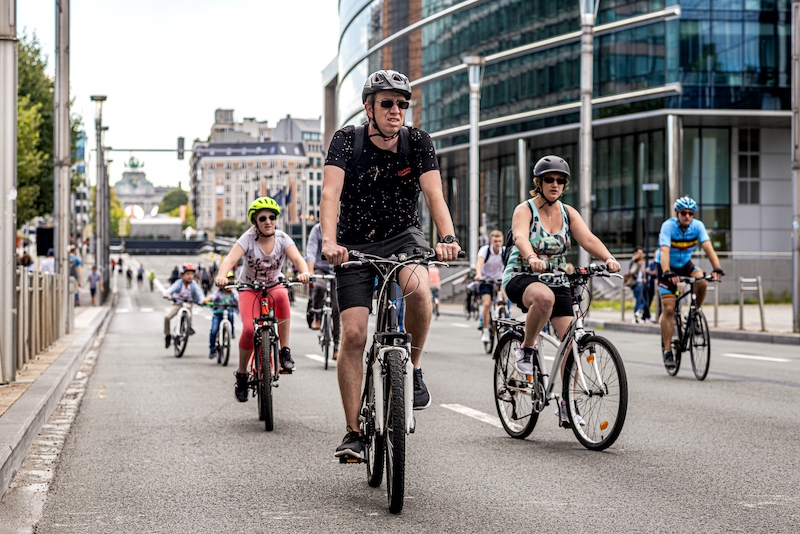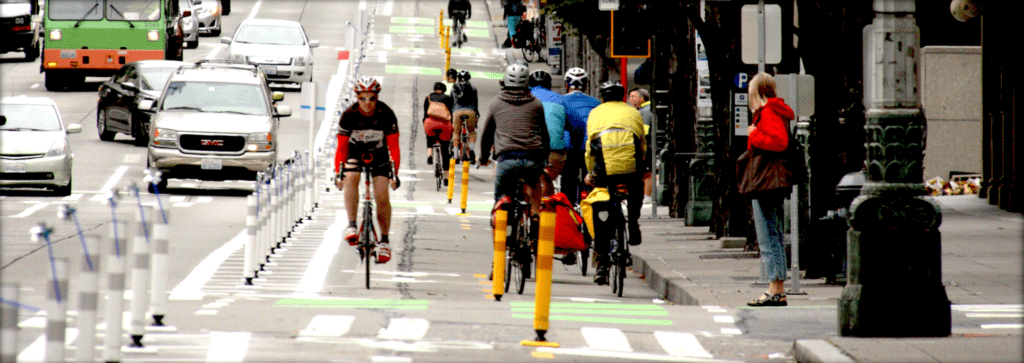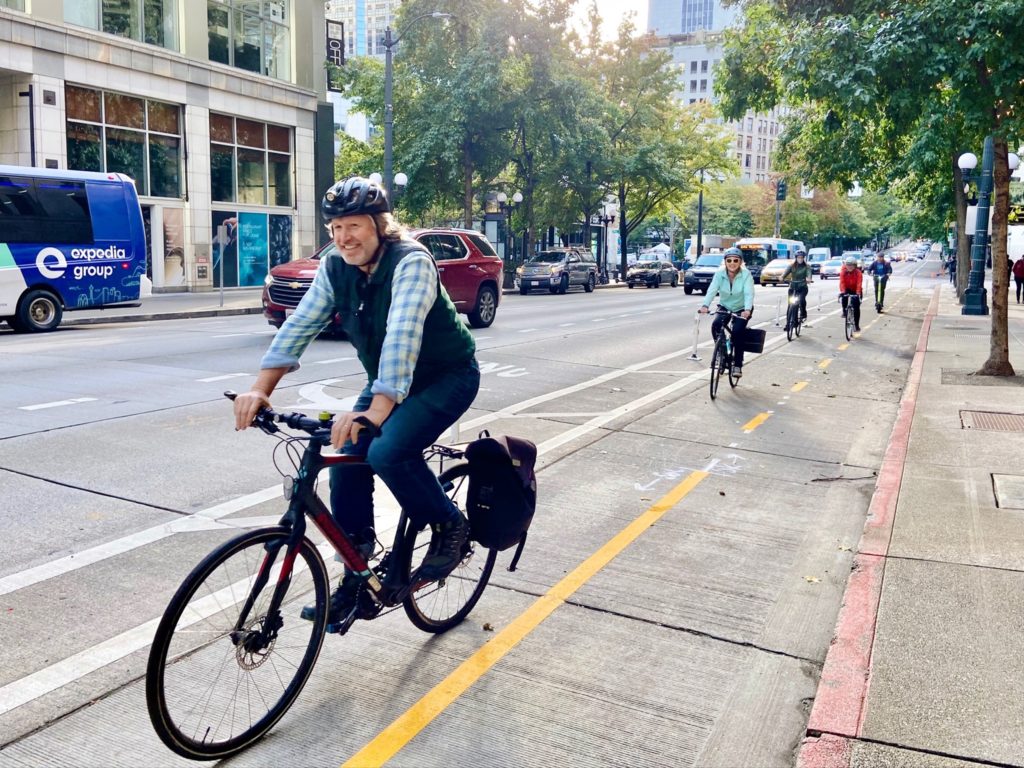
• Flip Book• eNews • eBikes • eAccessories • eCargo • eCities • eAdventures • eBikeTests •

• Flip Book• eNews • eBikes • eAccessories • eCargo • eCities • eAdventures • eBikeTests •
October 19, 2022 - Seattle is fast becoming one of the USA’s leading cycling cities with its updated Bicycle Master Plan (BMP) that identifies projects and programs to be implemented from 2014 to 2033.
Currently, the city has a bicycle network of around 163 miles, which includes 75 miles of protected or separated bike lanes, along with bike lanes and neighbourhood greenways.
From 2016 to 2020, Seattle added over 45 miles to its bicycle network as well as 1,530 bike parking spots, completing its 9-year levy goal, including 55 bike spot safety improvements.

The city has a goal of building an additional 55–60 miles of All Ages and Abilities (AAA) bike infrastructure as part of its Implementation Plan 2021 to 2024, which is encompassed within the current $930 million Levy to Move Seattle program (2015–2024) that makes up about 30% of Seattle’s transportation budget.
A new funding package for the next 9-year cycle, 2025 to 2033, is being developed by the Seattle Transportation Plan which will replace the Levy to Move Seattle and is grounded in public feedback.
Prior to the pandemic, Seattle had seen cycling ridership grow by 18%, and the city hopes to quadruple it by 2030. The city was ranked 6th in the USA in terms of bike commuters per capita at 4.1%.
The Seattle Bicycle Advisory Board, created back in 1977 and composed of residents, advises the City on the concerns and needs of the growing bicycling community.

In June 2021, Seattle launched its first pilot zero-emissions last-mile delivery hub for urban logistics along with companies working in transportation, delivery logistics and food preparation. The Seattle Department of Transportation (SDOT) is a partner on the project, which dovetails with a program to foster cargo bike use and a 2030 goal to achieve 30% zero-emission deliveries in the city.
Following the closing of Seattle’s Pronto bike-share system in 2017, a pilot program was established and Lime Bikes saw 1 million trips. But with a huge market to serve, Uber’s JUMP launched its red e-bikes in Nov. 2018, and Lyft is reported to be entering the market as well.
Seattle launched Vision Zero in 2015, a long-term citywide initiative to end traffic deaths and serious injuries on city streets. The next year, it completed the Bicycle and Pedestrian Safety Analysis (BPSA) to help identify roadway design and user behaviour that most correlated with collisions involving walkers or cyclists and develop a safety prioritization model to identify opportunities for spot and corridor improvement projects.

Seattle was one of the first U.S. cities to adopt a Climate Action Plan back in 2006, and in 2011 the city announced its goal to become carbon neutral by 2050.
Known as the “Emerald City” it’s the largest city in the state of Washington with one of the highest uptakes of electric vehicles in the USA.